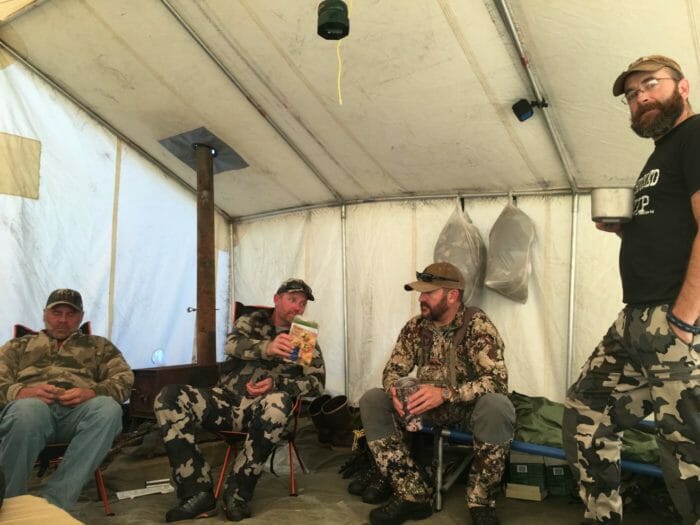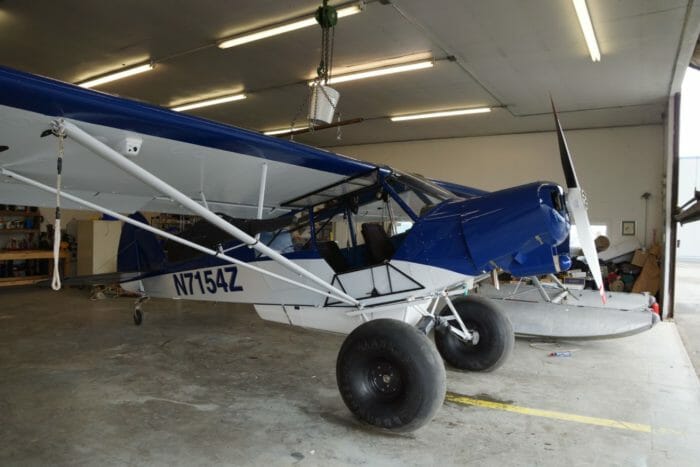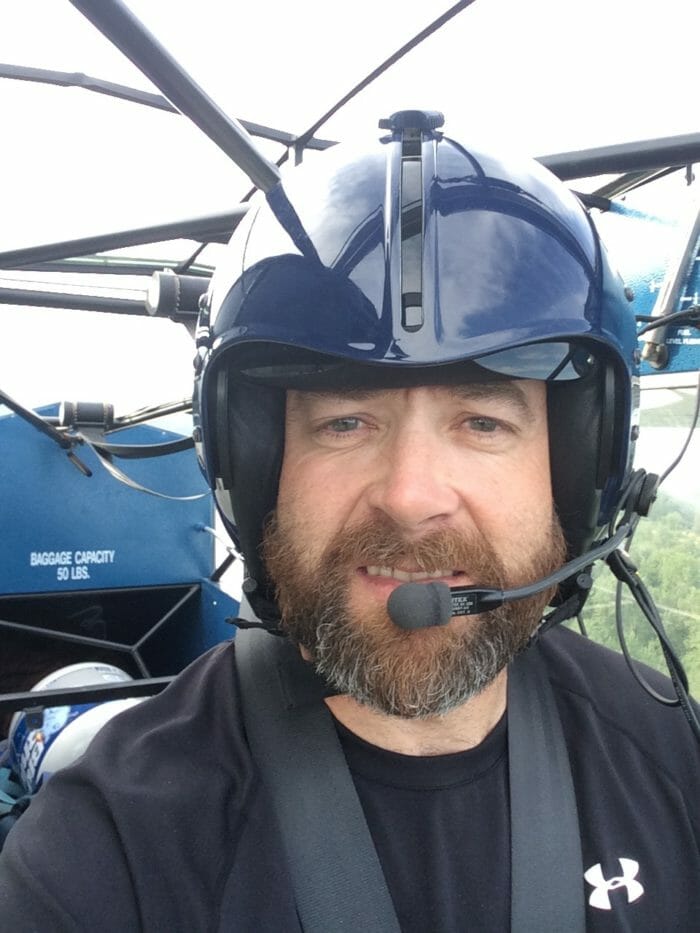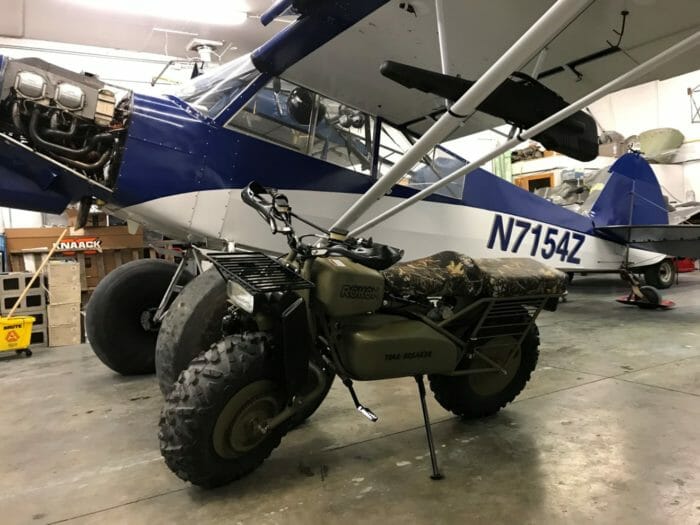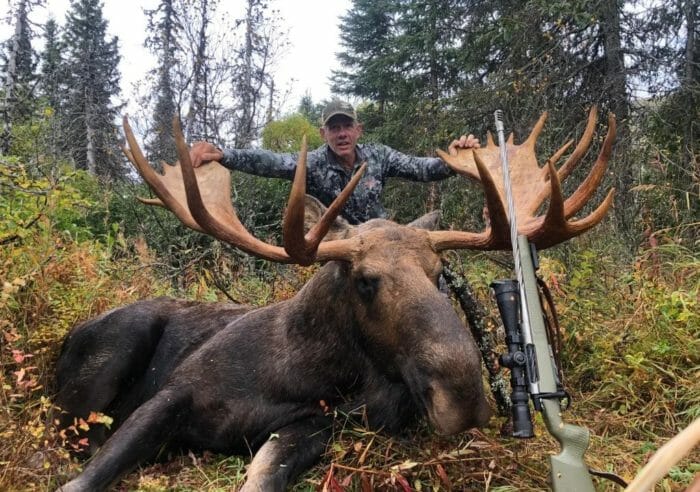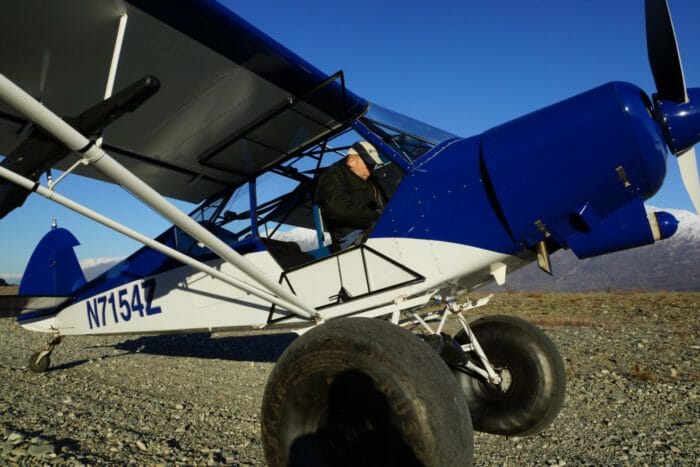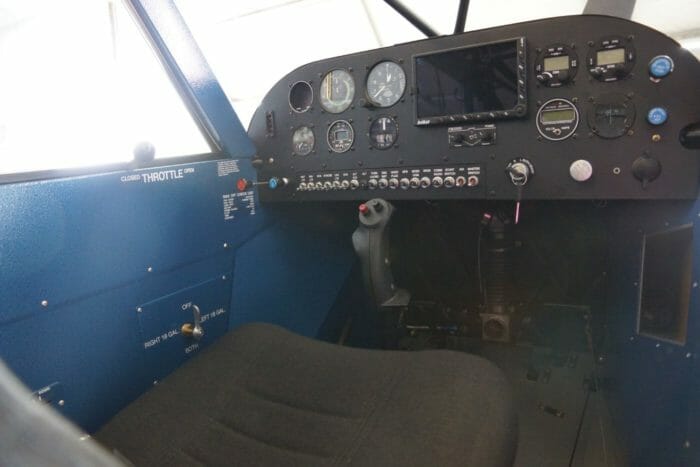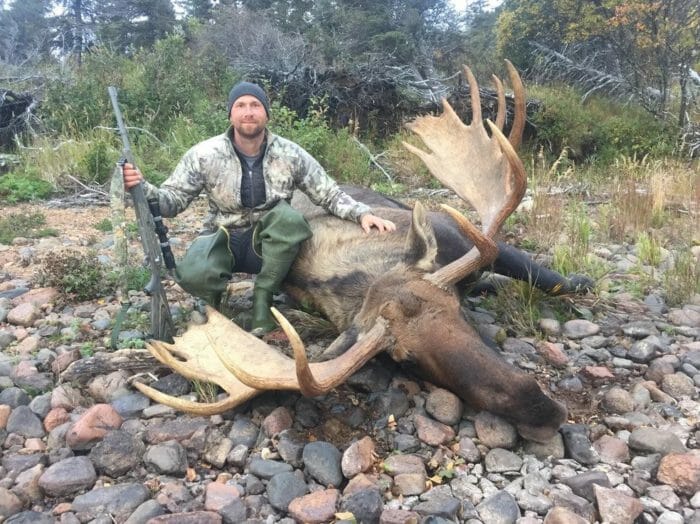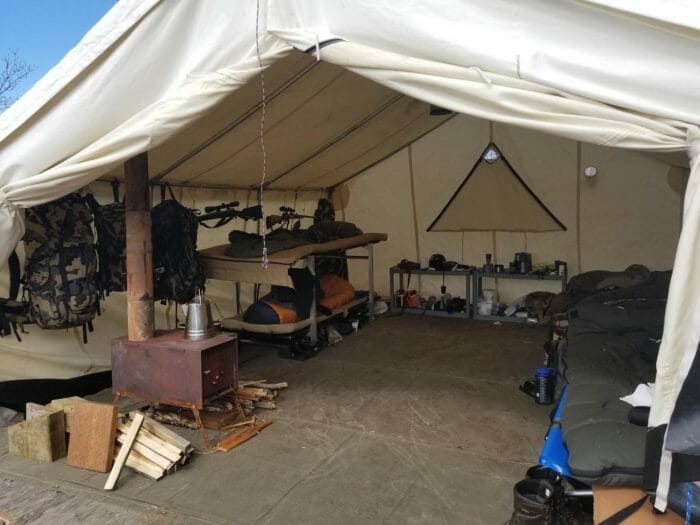Behind the Scenes with an Alaskan Bush Pilot
Our partners at Guidefitter introduced us to Cary Foster, a renowned Alaska bush pilot whose expertise has given hunters access to the wilds of Alaska – safely and memorably – for more than 30 years. Foster is not only a licensed mechanic, but an engineer and mechanic as well. His expertise, gleaned from season after season of scouting the best remote hunting spots and ensuring his custom Super Cub plane can take off and land safely on an ever-changing terrain, means he knows what it takes to make a hunt successful in the Alaskan wilderness. While the experience of taking a moose or massive bear is thrilling in and of itself, Foster knows that getting safely to and from the hunting site can make – or break – the entire event.
Foster shared with us his advice on how to select a knowledgeable bush pilot and guide for your next Alaskan hunt. He also talks about bush pilot etiquette – his advice for interacting with your pilot to ensure a memorable and fun hunting experience. He rounds out his time with us by sharing a cautionary tale – one that separates the best pilots from those who would land you nose-down in the tundra.
What Separates Alaska Bush Pilots from the Rest
Flying in Alaska is different from flying anywhere else in the world. The weather, the terrain, even the clients – everything is guaranteed to change in the Alaskan wilderness. Knowledge and experience are key factors that set the best bush pilots apart from the rest.
“It’s a lot different from flying airport-to-airport in the lower 48,” Foster said. “You’re landing on beaches, and you’re landing on the tundra – you have to know how to read the tundra and know what tundra’s going to be firm and what tundra’s going to put you on your nose.”
Alaska bush pilots deal with ever-changing variables: the weather, visibility issues in mountainous terrain, updrafts, and downdrafts. The very fact that hunts take place in isolated locations means that a bush pilot needs to have skills beyond flying itself.
“You’re 200 miles out – if you have a mechanical issue, then you’ve gotta fix it on that small lake, or limp along until you can land somewhere to get help,” Foster said.
Takeoffs and landings are unlike the experience you’d get anywhere else in the world, too.
“Landing on pavement is so much different from landing on a gravel beach with volleyball-sized rocks on 35-inch Alaska Bushwheels, versus your typical 8-inch tires”
Your landing strip can change from year-to-year, too – even if your hunting location doesn’t change – because you’re often landing on rivers, small lakes, or glaciers which change the terrain from season to season.
“Someone who flew 10,000 hours down in the Amazon wouldn’t be able to fly up here. It’s totally different,” Foster said.
Selecting the Best Bush Pilot for Your Hunt
Alaska law requires that a Registered Guide-Outfitter, Class-A Assistant Guide, or an Assistant Guide who will personally pilot an aircraft to transport clients during the provisions of big game hunting services shall have a commercial pilot’s rating or a minimum of 500 hours of flying time in Alaska. But Foster cautions hunters – just because your pilot has 500 hours of experience does not mean he or she will get you to and from your hunting site safely.
“Anyone with 500 hours Alaskan flying time can be a guide. That doesn’t mean they’re ready,” he said.
A lot of pilots start out simply by flying between small Alaskan airports. This counts toward the requisite 500 hours, but it does not mean a pilot is ready to tackle the unpredictable nature of the Alaskan bush. So how do you find an experienced pilot to guide you safely out and back again on your dream Alaskan hunt?
Asking the Right Questions
Foster said that hunters often think the guide is primarily supposed to help them get the impressive animal to put on their wall. But it’s so much more than that.
“Too many people are just selling trips and don’t have any idea of what we’re dealing with when we’re flying out there,” he said.
When you’re researching guides for Alaskan hunting trips, ask the right questions. Is the person selling you the trip also the pilot/guide? If not, ask to speak directly with your pilot/guide.
“Talk to them on the phone and at the shows. Ask if they are a commercial pilot. Ask how many years they’ve been flying,” Foster advised.
He said you want a pilot with 10-15 years of Alaskan bush flying experience, adding that 90-95 percent of guides have been piloting their own planes in the wilderness for years.
“The biggest thing are younger pilots with just 500 hours of Alaska flight time. They don’t have the experience to get out in the bush,” Foster said.
Also, ask about what safety equipment they provide. Foster has outfitted his Super Cub with a number of safety features, including four-point harnesses and improvements to the wings to prevent stalling out at lower speeds, a common phenomenon called the “Moose Spin.”
“The majority of crashes are Moose Spins – where the pilot banks low to get a look at a moose and stalls out,” Foster said.
A good pilot will never push their plane beyond its limits. Foster also always recommends wearing a helmet, a carryover from his early piloting days in the Coast Guard.
“I had a young pilot I was training who was eager to add this and that upgrade to his plane. I told him I wouldn’t talk to him about any upgrades until he bought a helmet,” Foster said.
The young pilot went ahead and bought the helmet, which isn’t a cheap purchase ($3000.00). Then he brought the plane to me and we started putting the upgrades on his plane. A season went by and the young pilot was landing on the side of a mountain while hunting caribou and flipped his plane upside down upon landing.
“His helmet was cracked, but he walked away,” Foster said. “The helmet saved his life.”
Foster also carries a Rokon all-terrain vehicle on his plane. This aids in getting further into the bush but also helps with retrieval once an animal is harvested. Moving an 800+ pound moose is much easier with the Rokon.
Check the FAA Records
You also want to look at the Federal Aviation Administration’s incident reports to see what kind of incidents your pilot may been involved in. Your goal is to see not only the types of incidents but to gauge what kind of decisions contributed to the incident.
“It’s not just one thing that causes a plane to crash. It’s a domino effect – one thing goes wrong, and then another and another, and then the plane crashes,” Foster said. “If you can stop that first domino from happening – instead of saying, ‘it’s okay, I’ve got another gauge to cover this malfunctioning one’ – you can stop the crash from happening.”
Foster said every pilot will be involved in an incident at some point – you want to hire a pilot who demonstrates good decision-making skills and has the ability to say ‘no’ to flying in unsafe conditions when the pressure to get out into the field – or back home – is mounting.
“I still get the ‘get-home-itis.’ Take a step back. Take 15 minutes. Alaskan weather will change – maybe not in 15 minutes, but you’ll save replacing that $100,000 airplane or never seeing your grandkids again,” Foster said.
Question Your Pilot Before Takeoff
Foster likes a client who is going to ask, “What do you think about this weather?” If you have any worries ahead of takeoff, say so.
“If I put you in the back of my plane and you’re petrified, you’re not going to have fun,” he said. “It’s not a big deal to wait until the right time. Then, you will have fun and you’ll get that bear or moose. The reason you are doing the hunt is for the experience. If you have a bad flight, you’re not going to have fun.”
Speaking of Waiting
There is never a reason to put the hunt ahead of safe flying conditions. Alaska fair chase law requires that hunters wait until the morning after their flight out to the hunting grounds before they can begin pursuing their game.
“You can’t hunt the same day you fly. It gives you an unfair advantage against the animals,” Foster said.
So, if the weather’s bad, waiting a few minutes – or hours – for it to improve won’t affect your ability to hunt the next day.
“If you don’t feel comfortable, say something. You don’t have to go out – the animals will be there tomorrow,” Foster said. “And if the weather’s crappy, the animals are bedded down anyway, so it’s better to wait for conditions to improve.”
Bush Pilot Etiquette
There’s a saying that has been around for many years: “There are old pilots and there are bold pilots, but there are no old, bold pilots.” Foster says such purported wisdom isn’t very wise at all.
“Not long ago, Alaska was filled with old, bold bush pilots. In fact, if you weren’t just a little on the bold side, you had no business at all in trying to fly Alaska’s great outback,” he said.
As a pilot and big-game guide, Foster said he always has a small voice reminding him that “this customer paid a lot of money to chase his or her dream in Alaska, and I need to get them in the field today.”
Then there is the other voice – the voice of reason: “I can’t see across the lake because of the fog. Maybe I should wait an hour and let the fog burn off so that I can see the mountain with pine trees at the end of the lake.”
He added, “Of course, 90 percent of the clients say something like ‘I trust your piloting skills, we can make it,’ or ‘last year my pilot took off in worse weather than this and he was an excellent bush pilot.’ Believe me, these are just a few statements over the years we as bush pilots have heard.”
Never Pressure Your Bush Pilot
It is difficult to know when pressure—either internal or external—is a factor in a crash. Pressure affects each pilot differently.
Was a pilot who overloaded her aircraft after a hunting trip pressured by clients to do so, or simply eager to fit everything into the fewest trips possible? Did a newly-hired pilot who took off in marginal conditions feel pressure to prove to his co-workers that he was up to their unwritten standards, or did he blithely assume he was as capable as they were at completing the flight in unfamiliar territory?
How often are Alaskan pilots persuaded to take chances because of the influence from others or their own misconceptions about what flying in Alaska entails?
Understand how “Bush Pilot Syndrome” can Affect Your Plans
Foster points to “Bush Pilot Syndrome,” a combination of the universal internal pressure to make it home safely (“get-home-itis”) and the glory-seeking mindset more unique to Alaska aviation that encapsulates the Last Frontier mythology and legendary heroics of the early bush pilots.
“It’s this aspect of the Syndrome that has led many to believe flying here is inherently dangerous and thus requires a level of risk-taking on behalf of all pilots,” Foster said.
Evidence of Bush Pilot Syndrome, and other sources of pressure, can be detected in the language of accident investigations and news reports – for example, when a Flight Service Station tells the National Transportation Safety Board in a post-crash report that a pilot mentioned passengers getting impatient shortly before departing into marginal weather, or when pilots in a line of aircraft recall hearing the rear pilot report that she was struggling to keep up with them before crashing into the terrain.
“As the pilot and guide, we have a great amount of pressure: pressure from the owner, pressure from the client, or pressure from home. I could go on and on about what we are constantly thinking about when we are trying to give the client a trip of a lifetime,” Foster said.
Through the years, Foster has developed a way of coping with this pressure.
“I have come to the conclusion that it is more important for me to return home to my family so that I can enjoy my wife, kids, and grandkids,” he said. “The weather will change – it always does.”
Remember that Flying in Alaska is Inherently Dangerous
Foster started his flying career as a crew chief with the U.S. Coast Guard on Kodiak Island. He flew hundreds of missions in Alaska, saving people from sinking boats and airplane crashes on the side of mountains.
“There was an old saying in the Coast Guard, which was painted on a large sign on our hangar: ‘We have to go out, but we don’t have to come back,’” he said.
Through the years, Foster has pulled friends out of wrecked aircraft and carried their bodies back for burial, explaining to grieving family members why the crash happened.
“I know firsthand that flying is dangerous. I know that the weather will change midflight, and I know that people I am flying have families to go home to,” he said.
For both pilots and hunters, Foster said the best thing is for a person to know his or her physical and mental capabilities.
“Know when it’s time to say ‘no-go’ and sit down and have a cup of coffee and read a book instead,” he said.
Why Experience Matters when Flying the Alaskan Wilderness
Foster shared with us one of many stories that amplify the importance of experience and skill in an Alaskan bush pilot:
I am a firm believer in the “Domino Effect” that causes incidents/crashes/mishaps. As you read this account, you will be able to pick up on the dominoes that fell and could have cost me my life:
It was the last day of a great bear season, and we had great weather, great clients, and a great harvest.
The night before, we had just tagged out the last bear hunter for the season. We had put in a long day of hunting, experiencing the adrenaline rush as the client bagged the bear, then about three hours of skinning and a four-hour pack back to camp. Exhausted and thrilled, we sat down for the evening and had one of our campfire discussions. That night’s topic was how bad the weather can get and how fast it can change, especially on Peninsula Brown Bear. They say, “If you don’t like the weather up here, just wait 15 minutes.”
The next morning, our bodies were starting to feel the aches and pains of 25 days in the bush, sleeping on a cot in a sleeping bag, as wells as the numerous ups and downs of hunting brown bear.
Bob Cusack, who is a very close friend, mentor, and fellow pilot/guide, always hunts Peninsula Brown Bear with me. Bob and I flew the clients back to the lodge, and then I flew back to camp to start breaking it down. The morning was calm and crisp, with a few high clouds beginning to roll into the area. I enjoy breaking down camp because you are the only one out there in the wilderness for miles – quiet and peaceful!
My camp is set up with all the bells and whistles. Bob gives me a hard time each year because I always bring something new to camp: nice cots, big sleeping pads, Yeti coolers, barbecues, and a camp kitchen, just to name a few. So, it takes a while for me to set up camp and break it down.
I could hear the salmon splashing in the lake beside the tent, which was normal. Anywhere from 100,000 to a million sockeye salmon come into the lake to spawn. In Alaska, wherever there are spawning salmon, there will be bears; you may not see them, but they are there.
All-of-a-sudden, I could hear a bear in the lake chasing the fish. I came out of the tent and, sure enough, a record-sized boar was chasing the fish in between the tent and my floatplane. My heart was racing, and the adrenaline was flowing through my body. I jumped up and started yelling at the bear to get him to move on. He complied and moved down the beach.
Now, my body was coming down from the adrenaline rush and getting a little hungry. I told myself that, since I don’t have that much more to do, I would skip lunch and hold out for the big steak that Bob was cooking for dinner.
After another two hours of breaking down the camp, it was getting late in the afternoon. The wind was starting to increase, and the rain was drizzling. Clouds were getting lower to the lake, and I could see the wind picking up down the lake. I stepped up my pace and continued to pack the camp up into the Super Cub. This entailed carrying the camp over a large drainage hump and then another 20 yards over volleyball-sized rocks, lifting the loads up onto the floats, and then scrambling onto the floats to lift the loads into the airplane. Meanwhile, the wind and rain were getting worse by the minute.
I always secure my loads in my airplane with straps or ropes; a pilot does this because, if you get caught in turbulence, the load can shift, and your airplane will be out of center of gravity, which can cause the plane to crash. This time I thought to myself, “It’s only a 20-minute flight, and I have to beat this storm.” I decided to leave the rest of the camp and come back the next day.
I jumped into the Cub and fired it up. I did all my engine run-ups and started to taxi over to a little corner of the bay where the water was a little calmer. All-of-a-sudden the wind really picked up – the waves were now breaking over the bow of the floats and coming up into the propeller. The spray was covering the windshield.
The plane was rolling and bucking so hard that the items I didn’t tie down were now pushing my seat forward into the instrument panel. At one point, the waves had rolled the plane so that the right float was out of the water and the left wing tip touched the water. I thought to myself, “If I can just get it turned around into the wind, I can be airborne in 30 feet and get back to the lodge.”
As I got to the small corner where the water was calm, the same bear that I’d chased out of camp was in the water chasing fish. I don’t know if it was the sight of the bear that made me change my train of thought, or if it was just enough of a distraction for me to slow down and not be so rushed to get back to the lodge. I remembered what I always say to young pilots who want to start flying in Alaska: “Today is not a good day to die. There is always tomorrow that you can fly.”
I continued taxiing to where that bear was chasing fish. I pulled the airplane up onto the beach and tied it off.
My body was shaking uncontrollably as I took the satellite phone out of its case and called Bob to let him know that I would be waiting the weather out. His first comment was that it was a good decision. He had just received a report of a larger airplane that just crashed into the side of a mountain not but three miles away from me, and the coast guard couldn’t get to them because of the 75 mph winds at the top of the mountains.
I hope that readers can understand why it’s never too late to call off a flight, tie off to a beach, and have a cup of coffee and wait ’till tomorrow.
Cary Foster is a Guidefitter Verified Pro Guide and has guiding in Alaska for over 15 years. He specializes in moose, bear, and caribou. He is also the only dealer for Rokon all-terrain vehicles in Alaska.
For more information or to book a hunt contact Cary Foster at Full Scope Outfitters.
Mobile: 907-230-0488
Email: fullscopeoutfitters
Full Scope Outfitters


